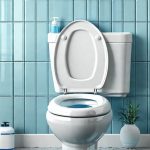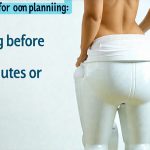Creating accessible and safe pathways within our homes and workplaces is often overlooked, yet it dramatically impacts quality of life for many individuals. We frequently focus on aesthetics – beautiful tiles, sleek fixtures, modern designs – but forget the fundamental need for ease of movement, particularly as we age or experience changes in physical ability. This isn’t simply about accommodating disability; it’s about universal design, creating spaces that are usable by everyone, regardless of their current capabilities. A well-planned bathroom path minimizes risks, promotes independence, and fosters a sense of dignity for all users, from young children to senior citizens.
The bathroom, in particular, presents unique challenges due to its inherent combination of hard surfaces, potential wetness, and often limited space. Falls are a significant concern here, ranking among the most common household accidents. However, with thoughtful planning and relatively simple modifications, we can significantly reduce these risks and create a more inviting and functional environment. This article will explore practical strategies for creating bathroom-friendly paths, both at home and in commercial settings, focusing on design principles, material choices, and preventative measures to ensure safety and accessibility are prioritized without sacrificing style or functionality.
Navigating the Bathroom Landscape: Core Principles & Considerations
Creating a safe bathroom path isn’t about removing all potential hazards; it’s about mitigating them intelligently. The core principle revolves around clear, unobstructed movement. Think of a pathway as needing to be wide enough for someone using mobility aids – a walker or wheelchair – while also allowing space for assistance if needed. A minimum width of 36 inches is generally recommended for main pathways, but wider is always better, especially in smaller bathrooms where maneuvering can become difficult. Beyond width, consider the surface itself. Slick surfaces are enemies and must be addressed proactively. Materials like polished tile or marble can become treacherous when wet, demanding careful selection and potential modifications to enhance grip. Understanding how to create flow-safe spaces is key for overall bathroom safety.
Accessibility isn’t just about physical limitations; it considers a broad spectrum of needs. A young mother pushing a stroller, an elderly individual with reduced balance, someone recovering from surgery – all benefit from the same design features that aid those with more permanent disabilities. This holistic approach ensures the bathroom is usable and comfortable for everyone. It also means considering lighting; adequate illumination is crucial to prevent trips and falls, particularly as vision naturally declines with age. Strategic placement of nightlights can further enhance safety during nighttime visits. This aligns with creating peaceful mornings where clear visibility is essential.
Finally, don’t underestimate the power of decluttering. A pathway cluttered with toiletries, rugs, or laundry baskets instantly becomes a hazard. Maintaining clear surfaces and designated storage areas is paramount to creating a safe and accessible environment. This isn’t just about aesthetics; it’s about proactively eliminating potential obstacles and ensuring a smooth, uninterrupted flow through the bathroom space.
Material Selection & Surface Enhancements
The choice of flooring material significantly impacts bathroom safety. While aesthetically pleasing options abound, prioritizing slip resistance is crucial. Textured tiles, whether ceramic, porcelain, or stone, offer better grip than smooth surfaces. Consider materials with a Dynamic Coefficient of Friction (DCOF) rating – this measures the floor’s resistance to slipping when walked on while wet. A higher DCOF value indicates greater safety. Beyond tile, non-slip vinyl flooring is another viable option, often more affordable and easier to install than traditional tiles. However, even with textured surfaces, it’s important to avoid loose rugs or mats that can create tripping hazards.
If existing smooth floors are a concern, several enhancements can improve their slip resistance. Non-slip coatings, applied professionally, can add texture without drastically altering the appearance of the floor. Similarly, anti-slip tape, available in various colors and textures, provides localized grip in high-risk areas like near the toilet or shower. However, these solutions are often temporary and require regular maintenance to remain effective. A more permanent solution involves replacing smooth flooring with a slip-resistant alternative during renovations. Investing in safety upfront can save both physical harm and potential costly repairs down the line.
Remember that even seemingly safe materials can become hazardous when wet. Regular cleaning is essential to remove soap scum, shampoo residue, and other slippery substances. Using non-slip cleaners specifically designed for bathroom surfaces helps maintain grip and prevent accidents. Furthermore, consider the transition between different flooring types – a sudden change in level or surface texture can pose a tripping hazard. Ensuring smooth transitions minimizes these risks and promotes effortless movement throughout the bathroom.
Addressing Thresholds & Doorways
Thresholds are often overlooked barriers to accessibility. Standard doorways typically have raised thresholds that can be difficult for wheelchairs, walkers, or even those with limited mobility to navigate. Removing or minimizing thresholds is a significant step towards creating a more accessible bathroom path. If complete removal isn’t feasible due to structural constraints, consider replacing the existing threshold with a low-profile, ramped option. This creates a gradual transition that’s easier for all users to traverse.
Doorway width is equally important. Standard doorways are often too narrow for wheelchairs or walkers to pass through comfortably. Widening doorways, if possible during renovations, significantly improves accessibility. If structural changes aren’t an option, consider installing offset hinges – these allow the door to swing clear of the doorway, effectively widening the opening by several inches. This seemingly small modification can make a substantial difference in usability.
Finally, consider the direction of door swing. A door that swings inward can obstruct movement and create obstacles within the bathroom space. Ideally, doors should swing outward or be designed to slide – this minimizes obstruction and allows for easier maneuverability. Careful planning regarding doorway modifications ensures a smooth and effortless transition into and out of the bathroom.
Shower & Bath Safety Enhancements
The shower and bath areas present particularly high fall risks due to their inherent wetness. Installing grab bars is arguably one of the most effective safety measures you can take. These should be securely mounted in strategic locations – near the toilet, inside the shower/bath area, and along any pathways within these spaces. Grab bars provide crucial support for individuals with balance issues or limited mobility. Ensure they are capable of supporting significant weight and are installed by a qualified professional to guarantee their stability.
Non-slip mats or textured surfaces within the shower/bath area further enhance safety. Avoid loose bath mats, which can easily slide around and create tripping hazards. Instead, opt for permanently affixed non-slip coatings or textured shower floors. For those with significant mobility limitations, consider installing a walk-in tub or shower – these eliminate the need to step over a high threshold, reducing the risk of falls.
Additionally, adjustability is key. Showerheads with adjustable heights and spray patterns accommodate users of varying abilities. A handheld showerhead provides greater control and flexibility, particularly for those who struggle to reach or maneuver within the shower area. These seemingly small adaptations contribute significantly to creating a safer and more comfortable bathing experience.
Lighting & Visual Clarity
Adequate lighting is paramount in preventing falls and ensuring safe navigation within the bathroom. Bright, even illumination reduces shadows and improves visibility, making it easier to identify potential hazards. Consider layering light sources – overhead fixtures, task lighting near the mirror, and nightlights for nighttime visits. LED bulbs are an excellent choice due to their energy efficiency and long lifespan.
Color contrast can also play a vital role in visual clarity. Using contrasting colors between floors, walls, and fixtures helps individuals with low vision distinguish boundaries and navigate the space more effectively. For example, a dark-colored toilet against a light-colored wall makes it easier to identify. Similarly, grab bars should be visually distinct from the surrounding surfaces to ensure they are readily identifiable.
Finally, minimize glare. Shiny surfaces can reflect light in ways that create visual distractions and reduce visibility. Matte finishes on flooring and fixtures help reduce glare and improve overall clarity. Strategic placement of lighting fixtures avoids direct reflections and ensures a comfortable viewing experience for all users. Consider how this ties into creating calm evenings to promote safe nighttime bathroom visits.





















